Tag: Air National Guard
Idaho National Guard mobilizes 350 Guardsmen for Presidential Inauguration 60
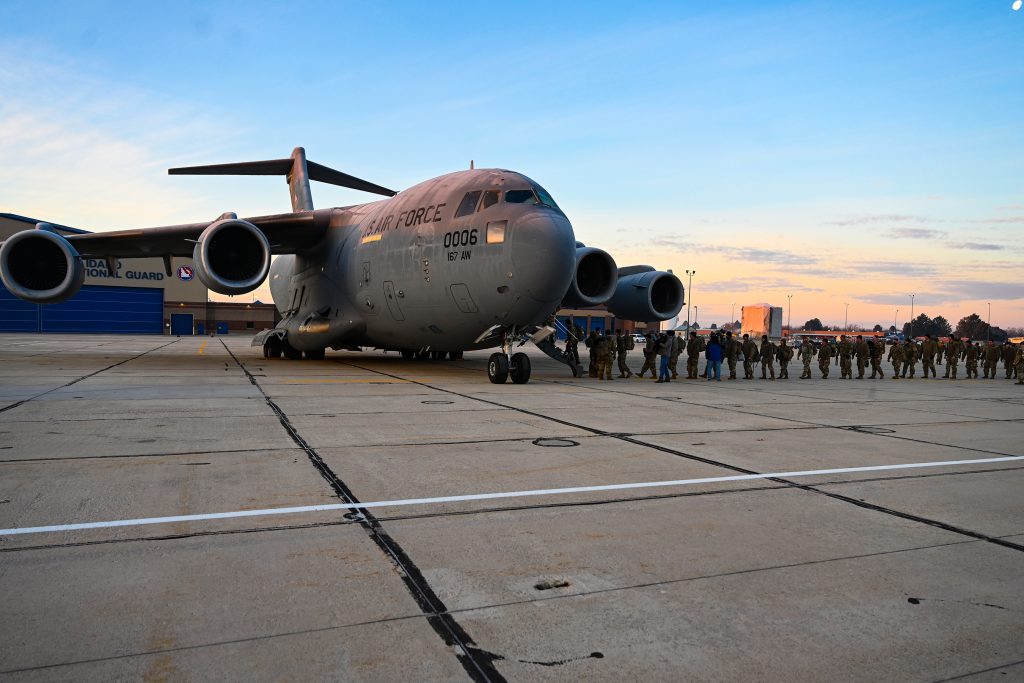
The Idaho National Guard mobilized approximately 350 Soldiers and Airmen to Washington, D.C. Jan. 17 to assist district and federal agencies with the 60th Presidential Inauguration.
“I am incredibly proud of the men and women of the Idaho National Guard as they mobilize to support civil authorities during the 60th Presidential Inauguration in Washington, D.C.,” said Maj. Gen. Tim Donnellan, adjutant general of Idaho and commander of the Idaho National Guard. “Their professionalism, dedication and unwavering commitment to our nation exemplify the very best of our state and our military tradition. I have full confidence in their ability to represent Idaho with honor and ensure the safety and security of this historic event.”
Idaho is one of approximately 40 National Guard states supporting the peaceful transfer of power between President Joe Biden and President-elect Donald J. Trump Jan. 20.
Guardsmen will augment the Washington D.C. National Guard and serve in support of the U.S. Secret Service, the lead federal agency responsible for coordinating the event, and assist the U.S. Capitol Police. Guardsmen will assist with crowd management, traffic control, emergency response services and other critical tasks necessary for the event’s success.
Idaho’s citizen-Soldiers and Airmen will return to Idaho following the inauguration.
The National Guard’s predecessors supported George Washington’s first inauguration and the National Guard has supported every inauguration since Abraham Lincoln’s in 1861. This mobilization maintains this tradition. More recently, the Idaho National Guard supported the 59th Presidential Inauguration in a similar role in 2021.
The Idaho National Guard also deployed a UH-60 Black Hawk company to Fort Belvoir, Virginia, last week for an unrelated year-long mission supporting the Joint Emergency Evacuation Plan in the National Capital Region, a routine rotational mission performed by National Guard units in support of the U.S Army.
German Soldiers Integrate with Idaho National Guardsmen for Field Exercise
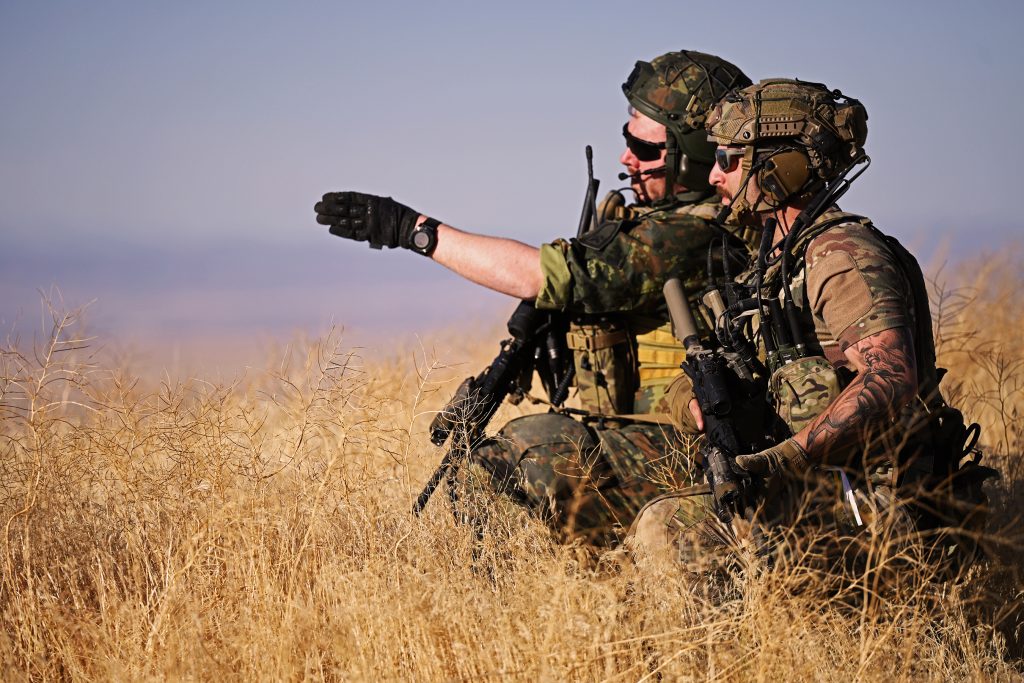
Idaho Air National Guardsmen from the 124th Air Support Operations Squadron partnered with the Idaho Army National Guard’s 1-183rd Assault Helicopter Battalion and soldiers from units based in Idar-Oberstein, Germany, to conduct a fully integrated field exercise to validate the Air Guard unit’s past two years of training Aug. 24-29.
The exercise played out on Gowen Field, Saylor Creek Air Force Range and the Orchard Combat Training Center and focused on five basic warfighter pillars: shoot, move, communicate, physical fitness and combat medicine. The field exercise included events corresponding to each of the five pillars, including live fire, convoy and tactical field movements, force-on-force scenarios, expedient field medicine and casualty evacuation.
Tech. Sgt. Alexander Hix, 124th ASOS standards of evaluation program manager, said the German soldiers integrated well with the unit despite the challenges of training in a new environment with unfamiliar equipment.
“They’re proficient in a lot of different areas, but one thing that definitely stood out was their willingness to jump in with both feet, be productive members of the team and try new firsts,” said Hix.
A joint tactical air controller and fire support officer who led the German detachment said seeing the planning process from the U.S. military perspective was a valuable experience for him, as was noting differences in leadership styles.
“What I saw of leadership here was very direct leadership, very good leadership and also very considerate of the men,” he said. “Caring for your men is a very good American strength that we’ve seen here, and I thought that was very impressive.”
He added that the German Armed Forces continued participation in exercises on American soil helps them to plan and develop ways to integrate American and other NATO nation troops into German units as they learn more about their capabilities and strengths.
Capt. Luke Nelson, 124th ASOS assistant operations officer, said the exercise itself provided data points for future improvement but more importantly, provided valuable experience to both the Airmen and their NATO partners.
“A very important piece of this for us is maintaining that relationship and broadening our horizons,” said Nelson. “This gives both their soldiers and our Airmen an opportunity to work alongside international allies in a field environment and to learn from one another. I think any time we can work with our partner nations and practice the craft that we’ve developed over the course of our careers, it’s going to make it far less painful in the event that we ever have to go to war together.”
State, Guard Conduct Cyber Discovery 2024
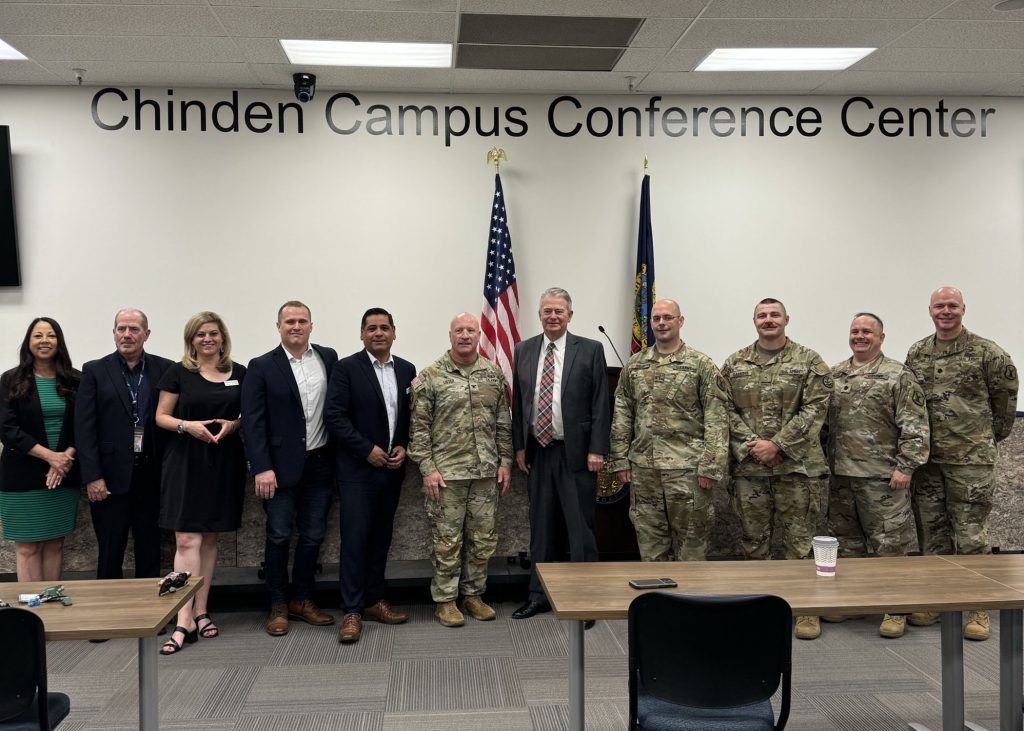
The Idaho National Guard and the Idaho Office of Information Technology Services recently hosted Cyber Discovery 2024 at the state’s Chinden Campus in Boise. Cyber Discovery is a regional cyber exercise focused on security operations, incident tracking and response. The exercise takes place within the framework of the Department of Defense’s Innovative Readiness Training program, enhancing its training value to both the state and Idaho National Guard while saving taxpayer dollars.
“One of the biggest benefits to conducting the training like this is that there’s minimal cost to either party,” said Col. Dan Lister, chief information officer for the Idaho National Guard’s Office of Information Management. “If you were to simulate this, you would be into the millions of dollars.”
During the exercise, 26 Guardsmen from Alaska, Idaho, and South Dakota Army and Air National Guards played the role of cyber threat actors while a team of 19 ITS employees, three Boise State cyber security program students and three Idaho Army National Guardsmen formed a defense team.
“We’re training to rapidly integrate Guard members for that cyber 911 that could come at any time,” said Chief Warrant Officer 4 Jerred Edgar, a defense cyber operations element officer with the Idaho National Guard. “We’re able to use the IRT to form and shape that response and rehearse it with our partners.”
Edgar said the ITS blue team made significant strides in threat detection, synchronized actions, and teamwork over last year’s performance in the exercise.
“Everything we do in these environments produces tangible results that the state can use to reduce cyber threats,” he said. “It’s process improvement, it’s building on efficiencies and identifying effective tools.”
The exercise provides exceptional training value to Guard members as well, said Lister.
“They’re training in a large-scale, real-world environment,” he said. “It really can’t be simulated and it’s very complementary to the skill sets they will use at various military echelon levels wherever they go in the world.”
Brig. Gen. Shannon Smith Selected as Assistant Adjutant General – Air
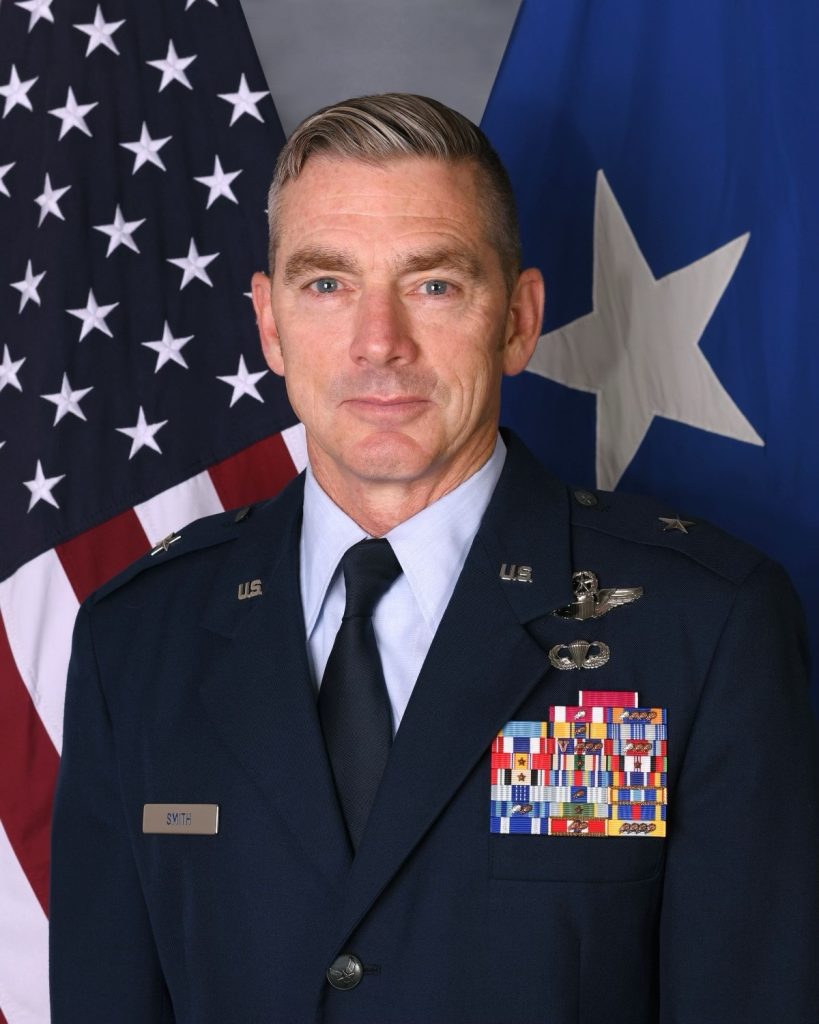
Maj. Gen. Timothy Donnellan is pleased to announce the selection of Brig. Gen. Shannon “Sinjin” Smith as the commander of the Idaho Air National Guard and assistant adjutant general- Air.
Smith replaces Donnellan in the same roles following Donnellan’s promotion to major general and appointment as adjutant general of Idaho and commander of the Idaho National Guard.
Smith previously served as the chief of staff of the Idaho Air National Guard, commander of the 113th Wing in Washington D.C., and commander of the Idaho Air National Guard’s 124th Fighter Wing. Smith has served in the Air National Guard since April 2002, following a decade in the active duty Air Force. As a pilot, he has logged more than 4,200 flight hours in his career and deployed to Afghanistan in support of Operation Enduring Freedom.
As the 124th Fighter Wing commander, Smith guided the wing through supporting the state’s response to the the COVID-19 pandemic while successfully conducting the wing’s second largest deployment in its history. During that 2020 deployment, the 124th Fighter Wing supported four named operations across 18 different locations, flying nearly 600 combat hours with no mishaps and a 100 percent weapons hit rate with no collateral damage.
Maj. Gen. Timothy J. Donnellan becomes Idaho’s 26th adjutant general
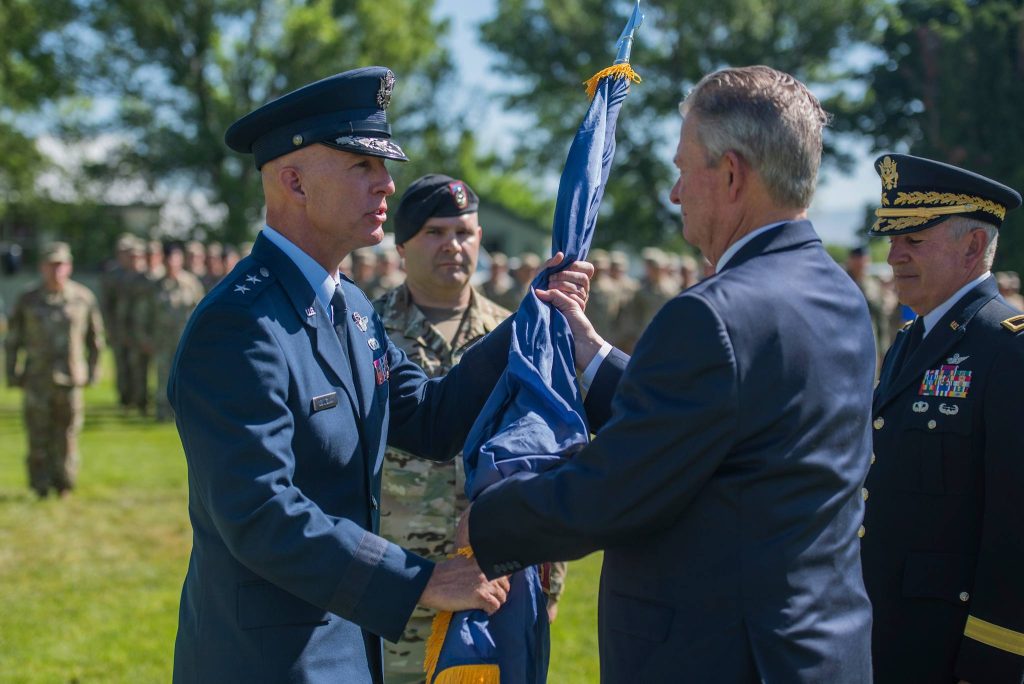
Idaho National Guard Participates in 13th Annual Return of the Boise Valley People

Idaho Medical Airmen Train in Field to Boost Readiness
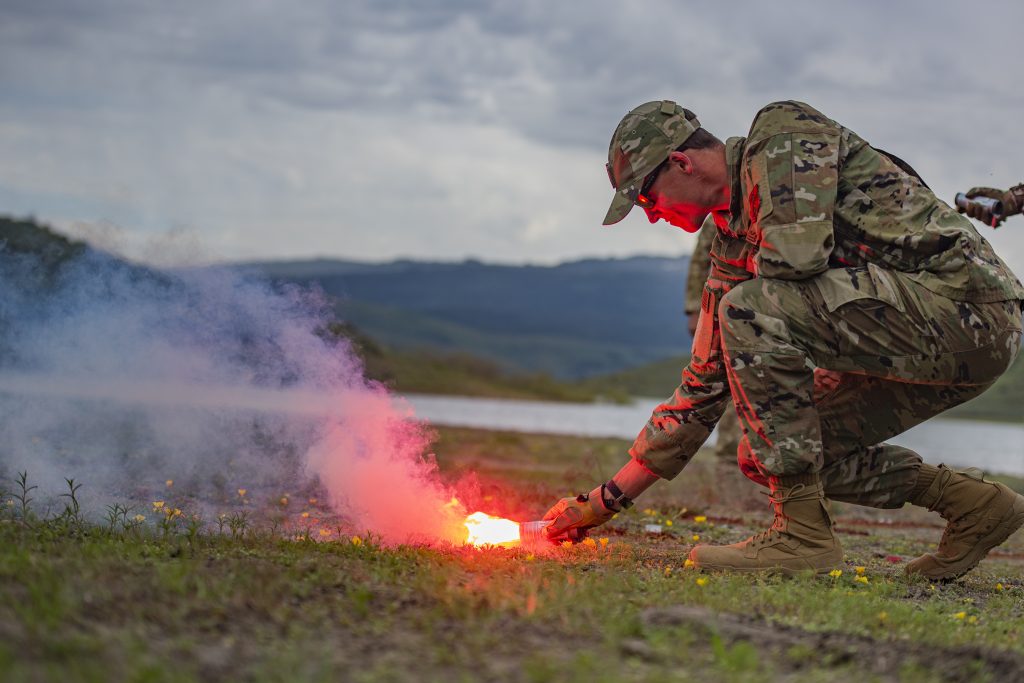
MOUNTAIN HOME, Idaho – Airmen from the Idaho Air National Guard’s 124th Medical Group trained in a field environment near Little Camas Reservoir in Elmore County June 5-8 to prepare for future deployments.
“The intent for this field training was to get the entire medical group exposed to the field environment for deployment readiness, as well as pushing comfort zones and team building,” said Maj. Mark Urban, critical care air transport team physician.
About 65 medical personnel practiced treating and stabilizing casualties using tactical combat casualty care in a simulated deployed location while defending medical structures and personnel.
Master Sgt. Raymond Perez, 124th Fighter Wing survival, evasion, resistance and escape specialist, trained the Airmen to survive in intense situations in unfamiliar surroundings.
“The medical teams will be geographically separated from the hospitals while deployed, functioning from a forward operating base,” said Perez. “I am training them on personal protection, clothing, building shelters, building fires, mental and physical health, environmental safety and protection, water purification and food sustenance. We are going to find food in the area, anywhere from vegetation on the ground to hunting animals that we will cook and eat.”
Medical personnel focused on tactical combat casualty care, point of injury, patient packaging, calling in a 9-Line medevac, patient movement, ground treatment and prolonged field care. Perez trained them on map and compass skills, signaling and recovery and making ground-to-air signals with flares for air rescue.
Idaho National Guardsmen, German JTACs reinforce relationships through training
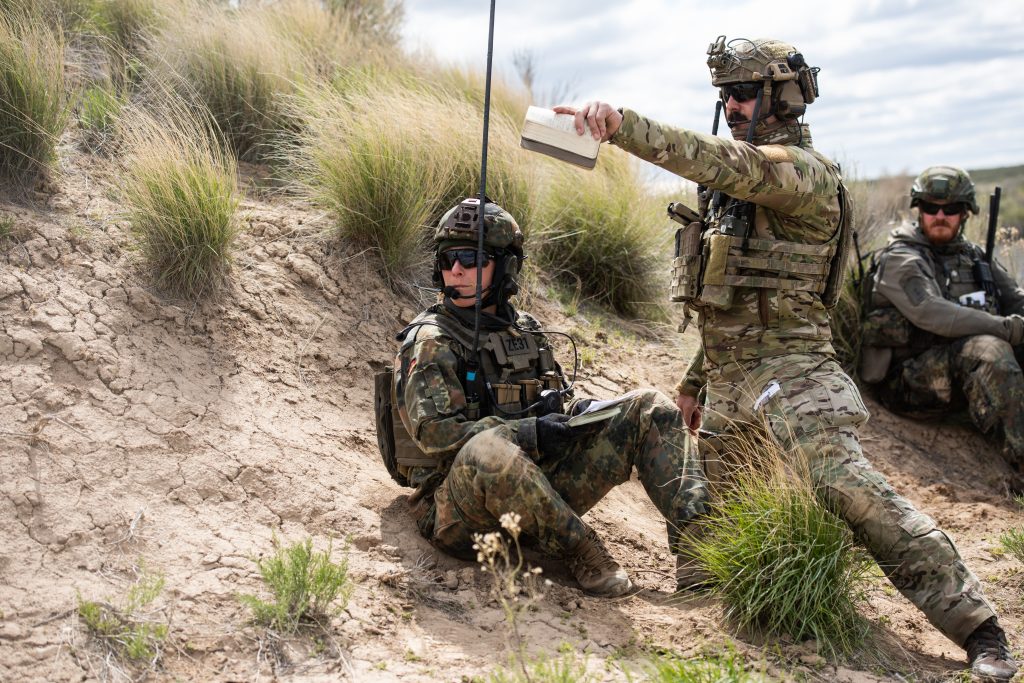
In 2015, an enlisted Idaho Air National Guardsman and a German Army lieutenant attended the same Joint Terminal Attack Controller Qualification Course and began a friendship that has had international implications for the past eight years. The two engaged in a series of conversations throughout their time at the course that resulted in a lasting partnership between the Idaho National Guard and the German military.
Master Sgt. Justin Clark, a senior airman at the time, is now a JTAC program coordinator with the 124th Air Support Operations Squadron. Clark said he immediately began looking for opportunities to bring the lieutenant’s unit to Idaho upon his return from the course. He said his unit commander’s support was key to guiding him through the process of coordinating and facilitating the German JTAC unit’s first visit to Gowen Field in the spring of 2016. The unit has returned every year since.
“The win, where it gets better every year, is the partnership,” said Clark. “We share lessons learned, and everyone’s experience culminates to make both parties better.”
This year, soldiers and airmen from Germany’s Joint Terminal Attack Controller Competence Center partnered with the Idaho Air National Guard’s 124th Fighter Wing to conduct close air support training at the Saylor Creek and Juniper Butte Ranges, Idaho, May 1-18. Idaho Army National Guard UH-60 pilots and crew also supported portions of the training, adding another layer of realism to the German troops training and further expanding their nearly decade-long partnership. The joint training incorporated NATO tactics, techniques and procedures, utilizing A-10 Thunderbolt II aircraft to prosecute targets ranging from armor, artillery, bunkers, simulated enemy combatants, moving targets, surface to air threats and more.
The visiting joint terminal attack controllers coordinate, integrate and direct the actions of combat aircraft engaging in close air support operations and joint fire observers, who augment JTACs by relaying target data. Leading them was Clark’s former classmate, Maj. Andreas Marx. Now a JTAC instructor himself, he said taking advantage of Idaho’s vast military range complex to enhance his unit’s training and further strengthen the international partnership is a win-win partnership.
“The CAS training opportunity that we have here, in conjunction with our partners from the 124th Fighter Wing is invaluable to us,” Marx said. “We do focus our training very much on large scale combat operations scenarios in the European theater of operations. Our partnership provides both sides with a common understanding and shared TTPs that will be of utmost importance during possible future conflicts with near-peer enemies.”
Located approximately 43 miles southeast of Gowen Field, Saylor Creek Range offers an impact area three miles wide by six miles long, where air and ground assets can employ live munitions.The Juniper Butte Range is located on 110,000 acres in southern Idaho and is covered with simulated hostile radar facilities, most of which are moveable electronic “threats. The range complex consists of two mock surface to air missile site targets in two strafe pits, a command site, a mock rail yard protected by two SAM sites, a radar/radio jamming tower and a range maintenance depot.
Master Sgt. Dennis Goettel, a joint fires platoon sergeant with the German Army, said the training site is unlike anything they have in Germany.
“In Germany, our soldiers never get into realistic situations like they do in Idaho because of training restrictions,” said the platoon sergeant. “It helps our soldiers to see live munitions hit their targets because then they know what they say to pilots really matters.”
In addition to the training, 124th ASOS Airmen and their German guests participate in other military exchange activities. This year, the units completed German and ASOS physical fitness assessments, and the Germans conducted shoot-and-move 9mm pistol and M4 carbine qualification courses for the Guardsmen.
Clark said the unit is expected to return to Gowen Field for another training event in August, when it will fully integrate with the 124th ASOS to conduct full mission profiles encompassing the squadron’s focus points – shoot, move, communicate, practice combat medicine and fitness.
 Official Government Website
Official Government Website